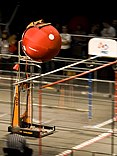
FIRST Frenzy: Raising the Bar was the 2004 game for the FIRST Robotics Competition. The game included elements from previous years' games, including mobile goals, "capping" goals with large inflatable balls, and others. In Raising the Bar, teams could score by having their human player score purple balls in any of the goals, capping the goals with a multiplier ball, or hanging their robot suspended from the 10-foot (3.0 m) high 'chin up bar'. In the qualifying matches, Teams competed in 2-member randomly generated alliances. In the elimination rounds, 3-member alliances competed against each other with one team sitting out each match. The alliance that won two matches advanced in the tournament.

Stack Attack was the game for the 2003 FIRST Robotics Competition. Two teams of two robots compete by moving large Sterilite bins into their zones and arranging them into stacks.
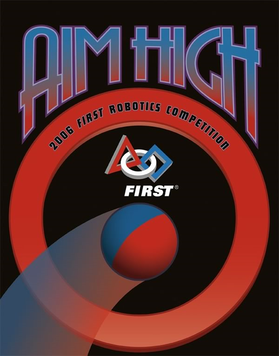
Aim High was the 2006 game for the FIRST Robotics Competition. The competition involved teams competing to gain points by delivering balls into goals and positioning their robots in certain positions on the playing field. The teams took it in turn to provide defense and attack.

Rack 'n Roll was the game for the 2007 FIRST Robotics Competition season, announced on January 6, 2007. In it, two alliances of three teams each competed to arrange ring-shaped game pieces on a central arena element known as 'The Rack'.

FIRST Overdrive was the 2008 game for the FIRST Robotics Competition, announced on January 5, 2008. In it, teams competed to complete counterclockwise laps around a central barrier while manipulating large 40 in (1 m) diameter "Trackballs" over and under overpasses to score additional points.

The FIRST Championship is a four-day robotics championship held annually in April at which FIRST student robotics teams compete. For several years, the event was held at the Georgia Dome in Atlanta, Georgia, but moved to the Edward Jones Dome in St. Louis, Missouri in 2011, where it remained through 2017. In 2017, the Championship was split into two events, being additionally held at the George R. Brown Convention Center and Minute Maid Park in Houston, Texas. In 2018 and 2019, the Championship was held in Houston and Detroit, Michigan at the TCF Center and Ford Field. The event comprises four competitions; the FIRST Robotics Competition Championship, the FIRST Tech Challenge World Championship, the FIRST Lego League World Festival, and the FIRST Lego League Junior World Expo.
The 1948 Philadelphia Eagles season was the franchise's 16th season in the National Football League (NFL). The Eagles repeated as Eastern Division champions and returned to the NFL Championship game, this time defeating the Chicago Cardinals to win their first NFL title.

Lunacy is the game for the 2009 FIRST Robotics Competition. Announced on January 3, 2009, the name and some of the features of the game honor the 40th anniversary of the first human mission to the Moon. It is FRC's 18th game. This is the first FRC competition to use the cRIO Mobile Device Controller control system from National Instruments. The driver station introduced for 2009 was the Kwikbyte DS, which was replaced in 2010 by the Classmate PC.

Hockey Weekend Across America is an annual event devised by USA Hockey to promote the game of ice hockey in the United States. The weekend is capped by "Hockey Day in America", with broadcasts of National Hockey League games on the national networks of NBC (2011–2021) and TNT (2024–present).

Rebound Rumble is the 2012 FIRST Robotics Competition game. It is styled similarly to basketball.

The National Hockey League (NHL) first held a regular season outdoor ice hockey game in 2003, and since 2008 the league has scheduled at least one per year.
The 2016 NBA Summer League consisted of three pro basketball leagues organized by the National Basketball Association (NBA): the Orlando Pro Summer League, Utah Jazz Summer League, and Las Vegas Summer League.
Airport surveillance and broadcast systems are a set of runway-safety tools that display aircraft on and near an airport.
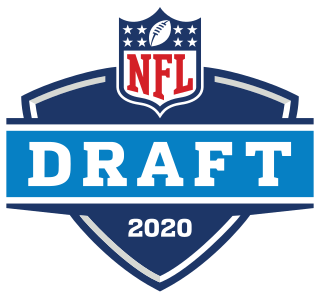
The 2020 NFL draft was the 85th annual meeting of National Football League (NFL) franchises to select newly eligible players for the 2020 NFL season. The first round was held on April 23, followed by the second and third rounds on April 24. The draft concluded with rounds 4–7 on April 25. The NFL originally planned to hold the event live in Paradise, Nevada, before all public events related to it were canceled due to the COVID-19 pandemic. Instead, all team selections took place via videoconferencing with league commissioner Roger Goodell broadcasting picks from his home.

The 2021 NFL draft was the 86th National Football League draft, the annual meeting of National Football League (NFL) franchises to select newly eligible players for the 2021 NFL season. The draft was held in Cleveland, Ohio from April 29 to May 1, 2021.
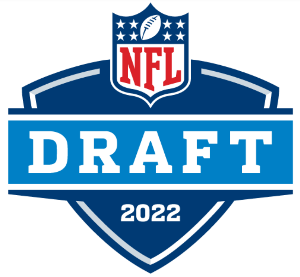
The 2022 NFL draft was the 87th edition of the National Football League's annual draft and was held from April 28–30, 2022, at the Caesars Forum on the Las Vegas Strip in Paradise next to Las Vegas. The first round was held on Thursday, April 28, and was followed by the second and third rounds on Friday, April 29. The draft concluded with rounds 4–7 on Saturday, April 30. It was the first draft to be held in the Las Vegas metropolitan area and the state of Nevada.
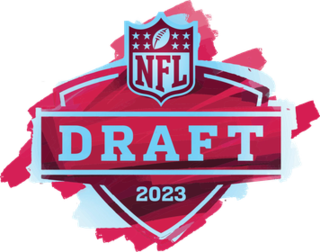
The 2023 NFL draft was the 88th annual meeting of National Football League (NFL) franchises to select newly eligible players for the 2023 season. The draft was held outside of Union Station in Kansas City, Missouri, from April 27–29, 2023.
















